In today's market, U.S. factories face enormous pressure. Your customers operate on a Just-in-Time (JIT) schedule, and they expect you to do the same. Any delay in shipping can lead to cancelled orders and damaged relationships. Often, the biggest bottleneck is the final step: the packing line. An old, slow, or unreliable packing system creates a constant source of stress and can bring your entire operation to a halt. Every late shipment hurts your reputation, and you see competitors who have invested in modern technology getting ahead. It's frustrating to feel stuck with equipment that costs you money and opportunity every single day. But what if your packing line wasn't a liability? What if it was your secret weapon for reliability and speed? Smart packing systems are changing the game, turning this final process into a streamlined, data-driven asset that guarantees on-time delivery.
Smart packing systems help U.S. factories meet JIT shipping by integrating real-time production data with automated wrapping, strapping, and labeling processes. This eliminates manual bottlenecks, drastically reduces packing time, and ensures every single coil is perfectly prepared for shipment precisely when needed. This synchronizes the factory floor with logistics schedules, making "Just-in-Time" a reality instead of just a goal.
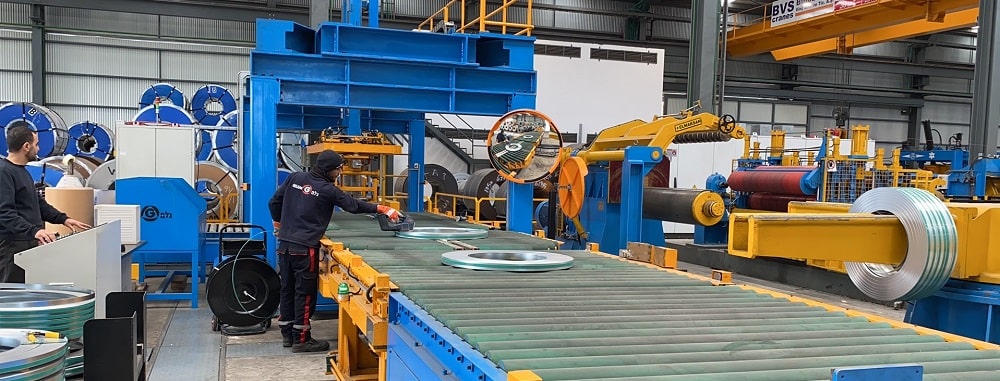
This all sounds great in theory, but how does it actually work inside a busy factory? I've spent my entire career solving these kinds of problems, first as an engineer on the factory floor and now as the owner of SHJLPACK. I built my business by helping clients make their operations more efficient and profitable. I understand the need for practical solutions, not just fancy technology. Let's break down exactly how these systems deliver on their promise and what it really means for your production numbers and your bottom line.
What exactly is a "Smart Packing System" in a steel mill?
You probably hear the words "smart" and "IoT" all the time. They can sound complex and expensive, making you wonder if they are just buzzwords. You need to know if this technology can solve the real-world problems in your steel mill, like high labor costs, inconsistent packaging quality, and production bottlenecks. I've seen technology presentations that look good on screen but have no place in the heavy-duty reality of a steel plant. You might worry about installing a complex system that your team can't maintain, leading to even more downtime. A true smart packing system isn't about flashy gadgets. It's about intelligent, rugged automation that connects directly to your production goals. It is a practical solution designed specifically for the harsh environment of a steel mill.
In the context of a steel mill, a smart packing system is an integrated line of machines—like coil cars, strappers, and wrappers—that communicate with each other and with your factory's central planning system, often called a Manufacturing Execution System (MES). It uses sensors and data to automate decisions, track every coil, and apply the correct packaging specifications without constant human intervention. This process ensures speed, accuracy, and safety.
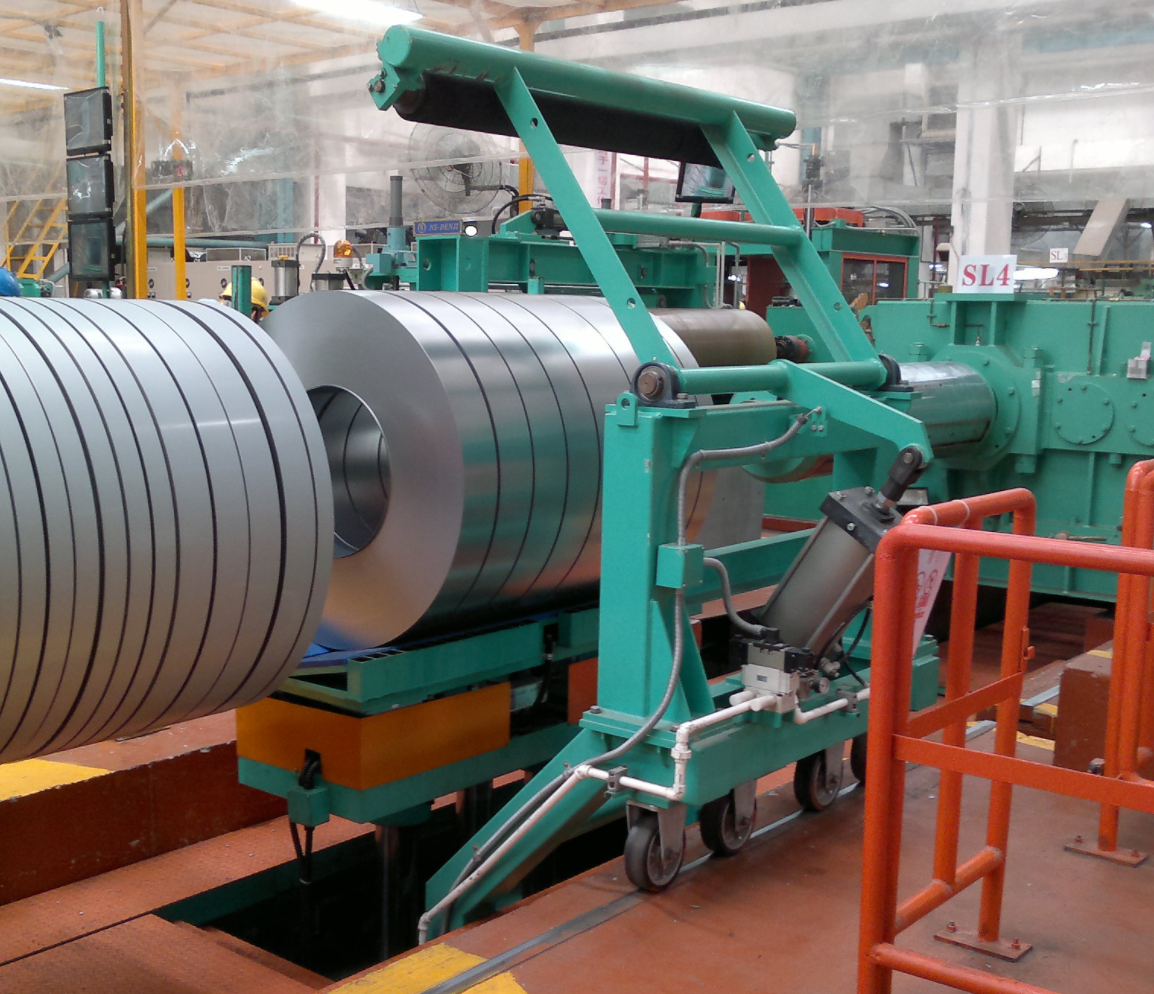
From Disconnected Machines to an Integrated Ecosystem
To truly understand a smart system, it helps to first think about the traditional way of doing things. In many older factories, the packing area consists of several disconnected machines. A worker uses a C-hook or a coil car to move a coil to the strapping station. Another operator runs the strapper. Then, the coil is moved again to a wrapping station, where a third operator wraps it. There is a lot of waiting time between these steps. Each handoff is a potential point of failure, delay, or human error. This is a major reason why capacity utilization suffers. Your main production lines might be fast, but if the final step is slow and choppy, you can never reach your full potential.
A smart packing system replaces these separate steps with a single, integrated ecosystem. The machines are connected, not just physically, but digitally. The "brain" of the system is a central PLC (Programmable Logic Controller) that communicates with every component. More importantly, this PLC "talks" to your factory's MES. When your production schedule creates an order for a specific steel coil, that data is sent to the packing line. The system automatically knows the coil's dimensions, weight, and the specific customer requirements—how many straps it needs, what wrapping material to use, and what information must be on the label.
Let's compare the two approaches directly:
| Feature | Traditional Packing Line | Smart Packing System |
|---|---|---|
| Data Flow | Manual entry, paper work orders | MES/ERP integration, real-time data |
| Operation | Operator-dependent stations | Automated handoffs, centralized control |
| Decision Making | Operator judgment, prone to error | Pre-set rules, sensor-driven logic |
| Tracking | Manual logs, visual checks | Barcode/RFID scanning, full traceability |
| Flexibility | Slow manual changeovers | Automatic recipe changes from MES |
This ecosystem is powered by practical, industrial-grade sensors. These are not delicate lab instruments. They are things like photoelectric sensors that detect a coil's presence and position, integrated scales that verify its weight against the order, and barcode scanners that confirm its identity. This network of simple, reliable sensors feeds real-time information to the PLC, allowing the system to make adjustments on the fly and ensuring that every coil is packed exactly to specification, every single time.
How do these systems directly enable Just-in-Time delivery?
Just-in-Time is the ultimate goal for any modern factory, but the packing department is often the biggest obstacle. A delay in packing means a truck is left waiting at the loading dock. This throws off your entire shipping schedule and, worst of all, leaves your customer waiting. You have probably dealt with the frustration of a packing backlog, maybe even had to pay extra fees for waiting trucks or run an entire extra shift just to catch up. It can feel like you are constantly fighting fires at the very end of your production line, right when you should be celebrating a finished product. A smart packing system works to synchronize your finished product with your shipping schedule. It transforms packing from a reactive, chaotic process into a predictable, rhythmic part of your overall logistics chain.
Smart packing systems enable JIT delivery by creating a seamless, high-speed buffer between production and shipping. They are designed to process coils at a consistent, predictable rate that matches your production output. This ensures a finished, wrapped, and labeled coil is ready for loading the moment a truck arrives, completely eliminating staging bottlenecks and wait times.
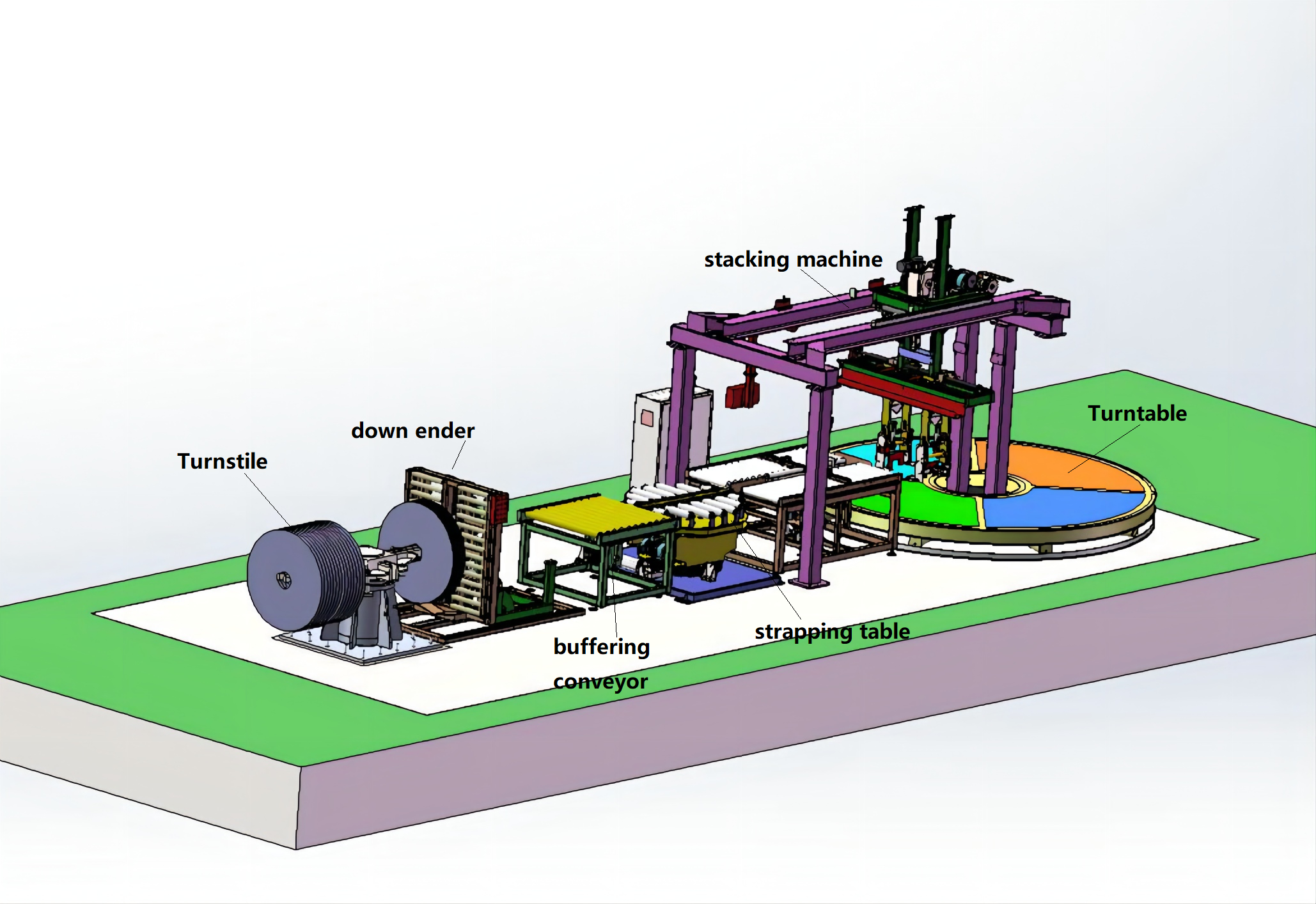
Synchronizing the Factory Floor with the Loading Dock
The core principle of JIT is "flow." To achieve it, you need a smooth, continuous flow of products through your facility. Traditional packing areas destroy this flow. They operate on a "batch and queue" model. Coils come off the slitter and are piled up in a staging area, waiting for the strapping machine. After they are strapped, they might get moved to another queue, waiting for the wrapper. Each queue is a buffer of wasted time and capital. It makes accurate scheduling nearly impossible. You can't promise a customer a specific shipping time when you don't know if a coil will take 10 minutes or 45 minutes to get through the packing maze.
A smart line works as a single, continuous machine. When a coil is finished on your slitting line and placed on the turnstile, the smart system knows it's there. The coil car automatically picks it up and places it on the packing line. It is then weighed, strapped, wrapped, and labeled in a continuous, uninterrupted sequence. The speed of the entire line is precisely paced to match the output of your production line.
Let's use a concrete example. I worked with a U.S. steel service center whose slitting line produced a new slit coil every four minutes. Their old manual packing process took, on average, seven to ten minutes per coil. The result was an immediate and constant backlog. The slitter had to be stopped frequently to allow packing to catch up. We designed a smart packing line for them that completed the entire cycle—pickup, strapping, wrapping, and labeling—in under three minutes. The result was transformative. The backlog was completely eliminated. The slitting line could run continuously, which dramatically increased their overall plant throughput.
This synchronization is powered by data. Your MES knows that a truck from a specific customer is scheduled to arrive at 2:00 PM. It can communicate this to the packing line, which can then prioritize the coils for that specific order. The system ensures the right coils are packed in the right order and moved to the loading bay just as the truck is backing in. This is the heart of JIT: using real-time information to make sure every part of your operation is working together in perfect rhythm.
What are the tangible ROI and efficiency gains for U.S. factories?
As a business owner, you have to justify every single major investment. A new packing line is a significant capital expense, and you need to see a clear and rapid path to getting your money back. I know this from my own experience building my factory. You have surely heard sales pitches that promise incredible results but lack hard numbers. You are right to be skeptical of claims that don't account for the total cost of ownership, including things like maintenance, spare parts, and training for your team. The good news is that the return on investment (ROI) for a smart packing system is not a vague promise. It is a measurable calculation based on concrete savings in labor, lower material waste, increased throughput, and improved safety.
The tangible ROI for U.S. factories that adopt smart packing systems typically comes from three main areas. First, a 50-70% reduction in manual labor costs in the packing area. Second, a 10-15% decrease in packaging material consumption through precise, automated application. Third, a throughput increase of up to 40%, which directly boosts your revenue potential without adding more primary production machinery.
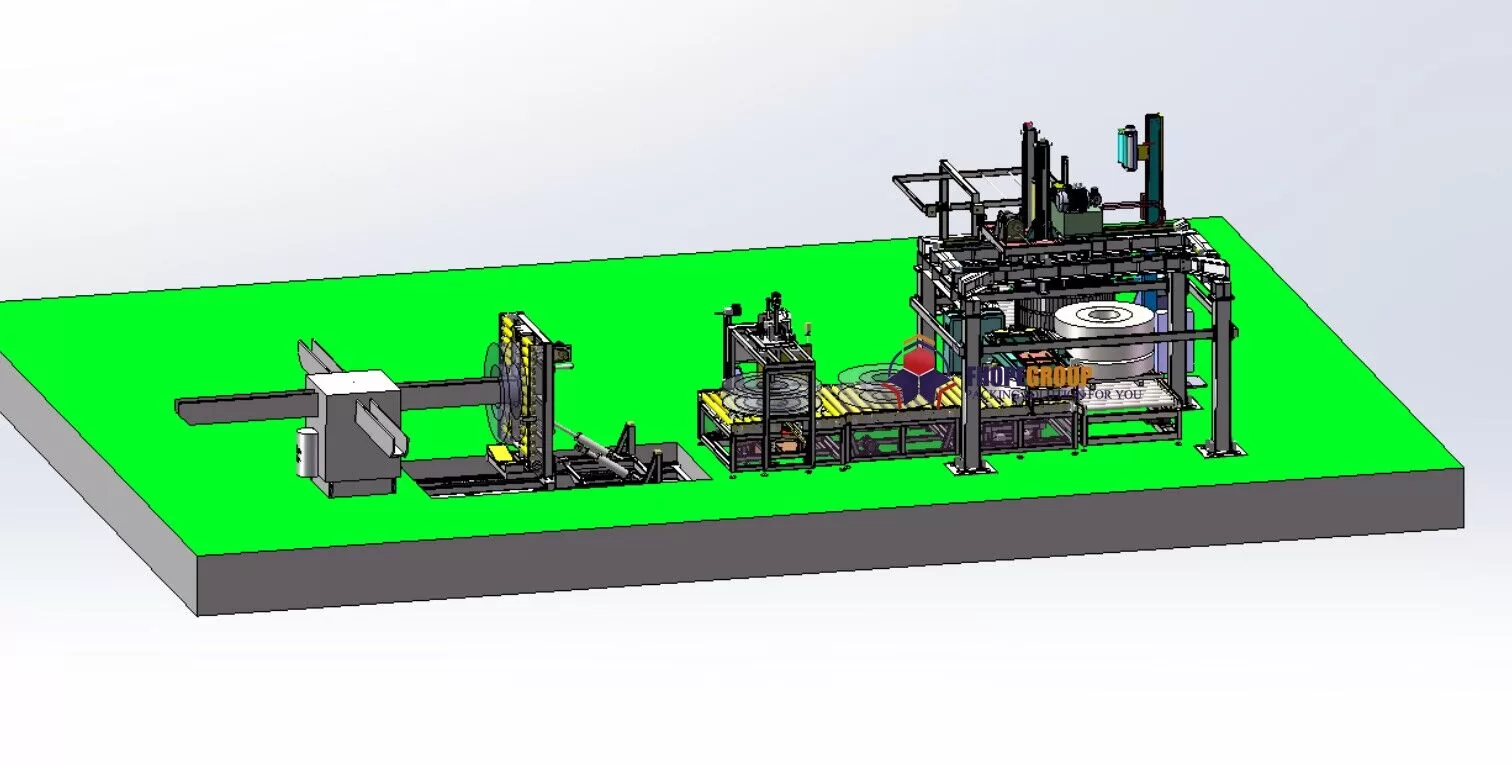
Calculating the Real-World Payback
To make an informed decision, you need to analyze the numbers. Let’s break down the ROI into clear, calculable categories. This is the same process I use when helping a client determine if a new line is the right move for their business.
Labor Cost Reduction
A traditional manual packing station requires multiple operators. You might have one person operating the coil car, another for the strapper, and a third for the stretch wrapper. That's three people per shift. A fully automated smart line can be managed by a single supervisor who oversees the entire process. For a factory running two shifts, that means you can reassign four to six full-time employees to more value-added tasks. In the U.S., with wages, benefits, and insurance, this can easily translate to a direct saving of $250,000 to $400,000 per year.
Material Savings
Manual wrapping is inherently inconsistent. One operator might use more stretch film than another, or they might put on extra layers "just to be safe." An automated stretch wrapper is built for precision. It features a powered pre-stretch system that can stretch the film by 200-300% before it's applied to the coil. This means you use far less film to achieve the same or better load containment. The system also applies the exact number of layers programmed for that specific product, every single time. This precision can cut your film consumption by 10-15%. For a large mill that ships thousands of coils a month, this adds up to tens of thousands of dollars in savings annually.
Throughput and Uptime
This is often the most significant financial gain. Your slitting lines and rolling mills are your most expensive assets. Every minute they sit idle waiting for the packing line to catch up is lost revenue. By eliminating the packing bottleneck, a smart line allows your primary production equipment to run at its full, rated capacity. As in the example I shared earlier, increasing the uptime of a slitting line can lead to a 20-40% increase in the number of coils you can process per day. This doesn't just lower your cost per ton; it dramatically increases your factory's total revenue capacity. This directly addresses the goal of improving asset utilization to over 95%.
Safety and Quality
While harder to quantify, the gains in safety and quality are very real. Automation removes workers from close proximity to heavy, moving equipment, drastically reducing the risk of accidents. This leads to lower insurance premiums and avoids the high costs associated with lost-time incidents. Furthermore, consistent, high-quality wrapping protects your coils during shipping. This means fewer damage claims from customers, which protects both your bottom line and your hard-earned reputation.
How can you integrate a new smart packing line with aging factory infrastructure?
Your factory is not brand new. Like most industrial facilities, it probably has a mix of older, reliable equipment and some newer machines. The thought of integrating a modern, data-driven system into your existing setup can seem like a technical nightmare. You might worry about compatibility issues, massive disruptions to production during installation, and the risk that the new system won't be able to "talk" to your older machines. The fear of a complex and failed integration project is a valid concern. However, a successful integration is not about ripping everything out and starting from scratch. It's about finding a strategic partner who understands how to build a bridge between the old and the new. This is a solvable engineering challenge.
Integrating a new smart packing line with aging factory infrastructure is best achieved through a phased approach. The first step is to create a standalone "island of automation" for the new packing line. Then, using modern PLCs and simple sensors, we can extract key data signals from the older equipment and feed them to the new system. This creates a digital bridge that allows the systems to communicate without requiring a complete overhaul of your existing production line.
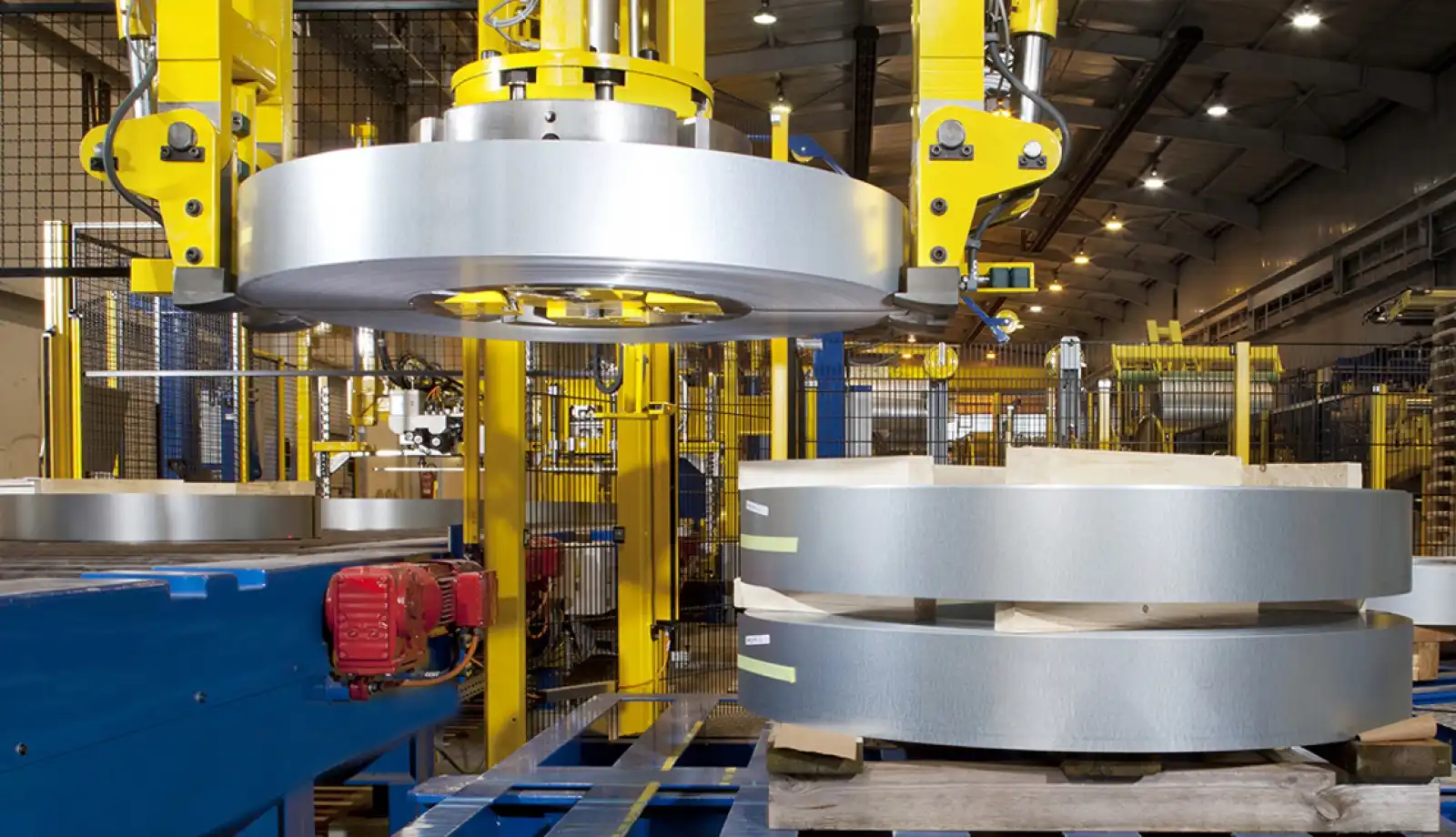
Building a Bridge Between Yesterday's Machines and Tomorrow's Data
As an engineer who has spent years on factory floors, I can tell you that this is one of the most common challenges my clients face. The key is a practical, step-by-step approach that minimizes risk and disruption.
The "Island of Automation" Strategy
The safest way to begin is by installing the new packing line so it can run independently at first. We call this an "island of automation." In this initial phase, the line is fully automated within itself—the coil car, strapper, and wrapper all work together—but the initial data for the coil might be entered by the supervisor on a touchscreen. This approach allows you to get the line installed and commissioned with minimal disruption to your other operations. It also gives your team a chance to get trained and comfortable with the new equipment in a controlled environment before it's fully integrated.
Creating the Digital Handshake
Once the island is running smoothly, the next step is to create the "digital handshake" with your older equipment. You don't need to replace the entire control system on a 20-year-old slitting line to make this work. We can often achieve integration with very simple, non-invasive methods. For example, I have often installed a basic photoelectric sensor on the turnstile of an old slitter. When a finished coil is placed on the turnstile, it breaks the sensor's light beam. This sends a simple "on/off" signal to the new packing line's PLC. The PLC is programmed to interpret this signal as "a new coil is ready for pickup." It's a simple, robust, and reliable handshake that connects the old machine to the new one.
We can use similar methods to pull data like coil width or diameter from older systems, or we can use barcode scanners at the entry point of the packing line to identify the coil and pull its data from the MES. The goal is not to force old technology to do new tricks. The goal is to build an intelligent communication layer on top of it. A good partner will always start with a thorough site survey of your facility. They will analyze your existing equipment and your workflow to design a solution that fits your factory, not the other way around. This is the difference between a simple equipment vendor and a true solutions partner.
Conclusion
Smart packing is not a trend for the future; it is a practical necessity for today's Just-in-Time manufacturing environment. It directly boosts efficiency, cuts operational costs, and turns your final production step into a powerful competitive advantage.





